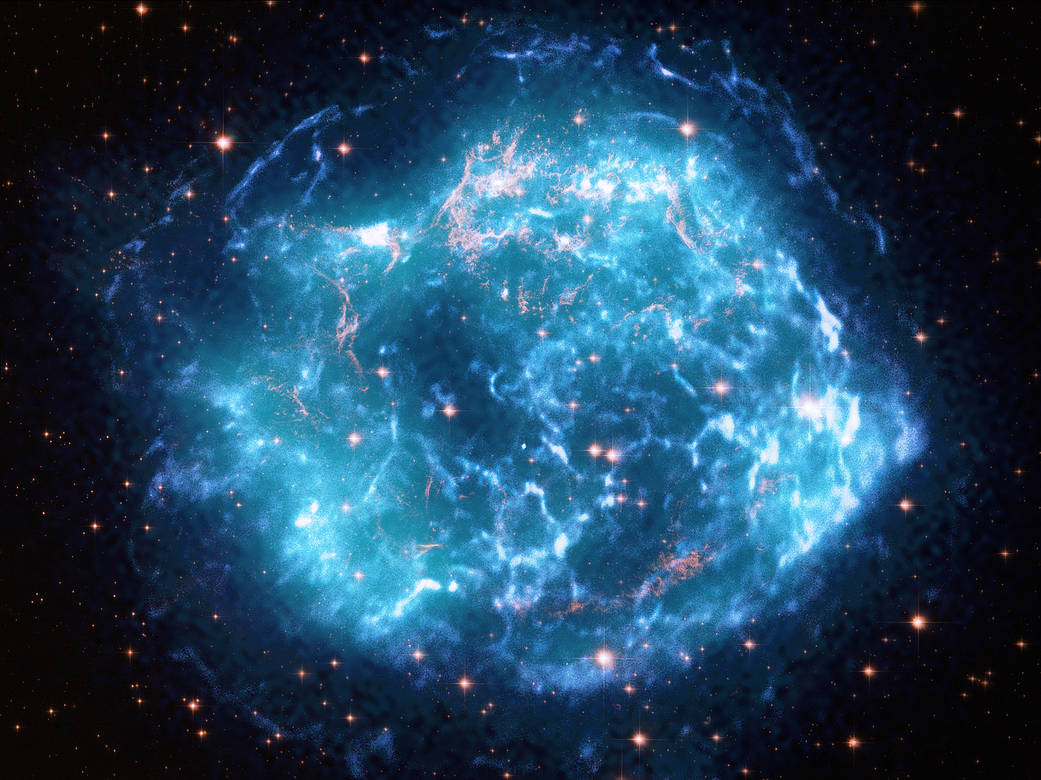IXPE测量爆炸的恒星残骸
When a massive star collapsed in the Cassiopeia constellation, it generated a supernova explosion with some of the fastest shockwaves in the Milky Way. These speedy shock waves are one of the reasons the Cassiopeia A (Cas A) supernova remnant was chosen to be our Imaging X-ray Polarimetry Explorer’s (IXPE) first observed object.
This composite image, made of data from IXPE, the Chandra Observatory, and the Hubble Telescope, shows Cas A. IXPE’s investigation of Cas A from Jan. 11 to Jan. 29, 2022, added crucial information about the behavior of exploded stars’ magnetic fields: scientists found that the magnetic fields in X-rays tend to be aligned in radial, not perpendicular, directions. Polarization data also suggest that these X-rays come from turbulent regions with many different magnetic field directions.
Image Credits: X-ray: Chandra: NASA/CXC/SAO, IXPE: NASA/MSFC/J. Vink et al.; Optical: NASA/STScI
当仙后座的一颗大质量恒星坍塌时,它产生了超新星爆炸,产生了银河系中最快的冲击波。这些快速的冲击波是仙后座A(Cas A)超新星遗迹被选为我们的X射线成像偏振探测器(IXPE)第一个观测对象的原因之一。
这张合成图像由IXPE、钱德拉天文台和哈勃望远镜的数据组成,显示了仙后座A。IXPE从2022年1月11日至1月29日对仙后座A的观测,增加了关于爆炸恒星磁场行为的重要信息:科学家发现X射线中的磁场倾向于径向排列,而不是垂直排列。偏振数据也表明,这些X射线来自具有许多不同磁场方向的湍流区。
IXPE从2022年1月11日至1月29日对Cas A的调查,增加了关于爆炸恒星磁场行为的关键信息:科学家们发现,X射线中的磁场倾向于在径向而不是垂直方向上排列。偏振数据也表明,这些X射线来自具有许多不同磁场方向的湍流区。
影像来源: X射线:NASA/CXC/SAO, IXPE: NASA/MSFC/J. Vink et al.; 可见光: NASA/STScI

